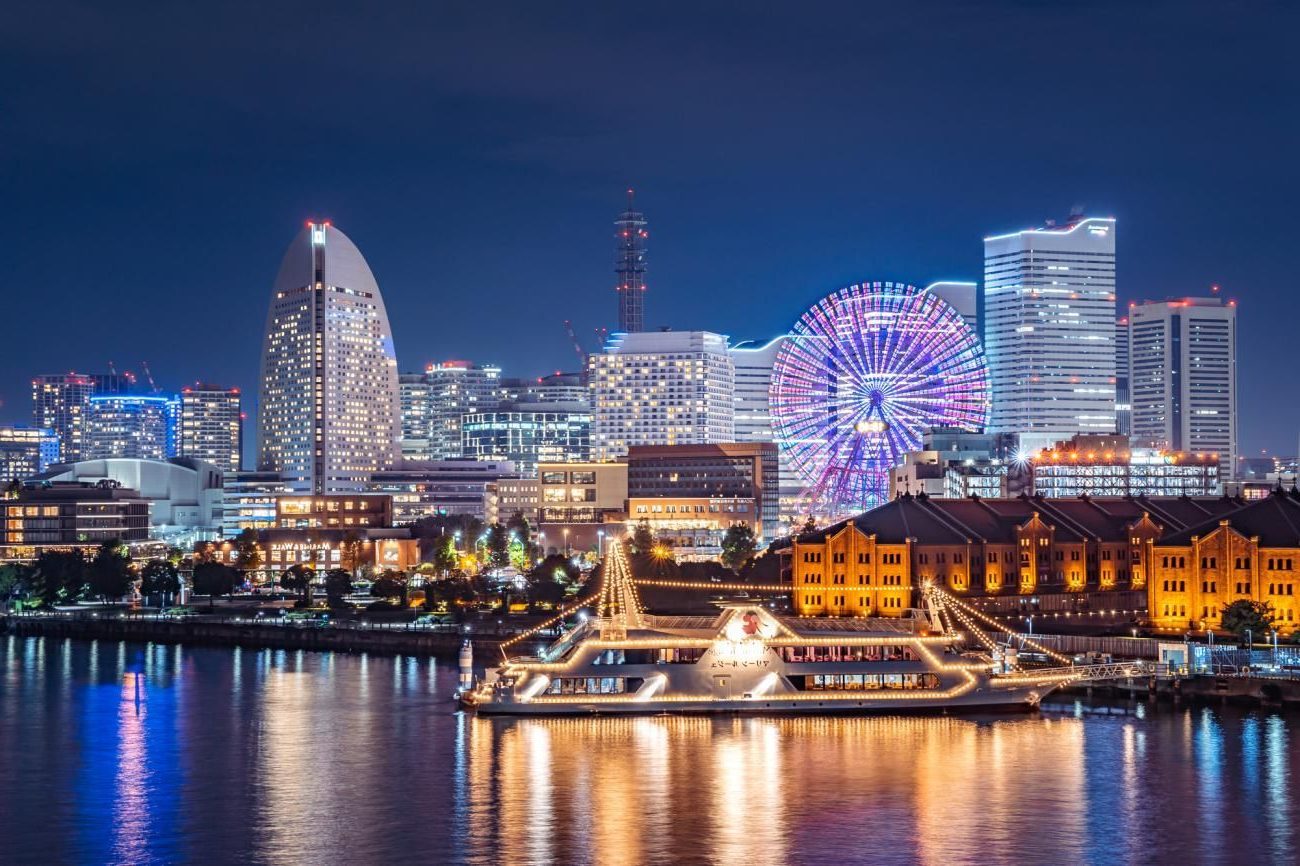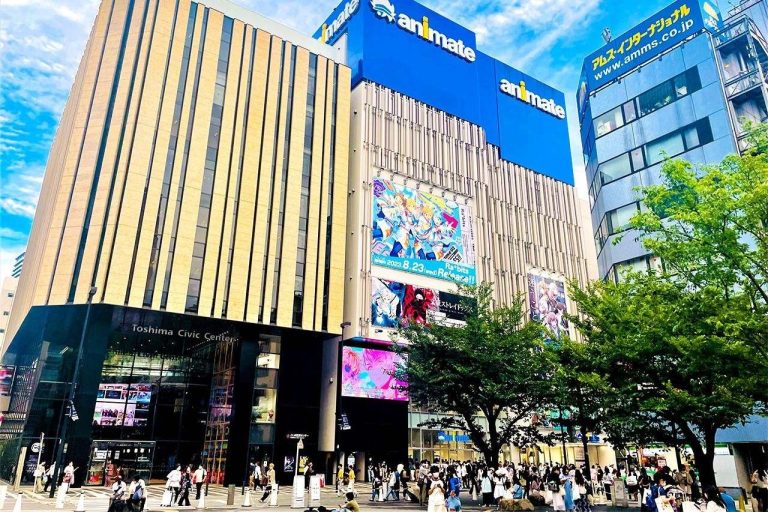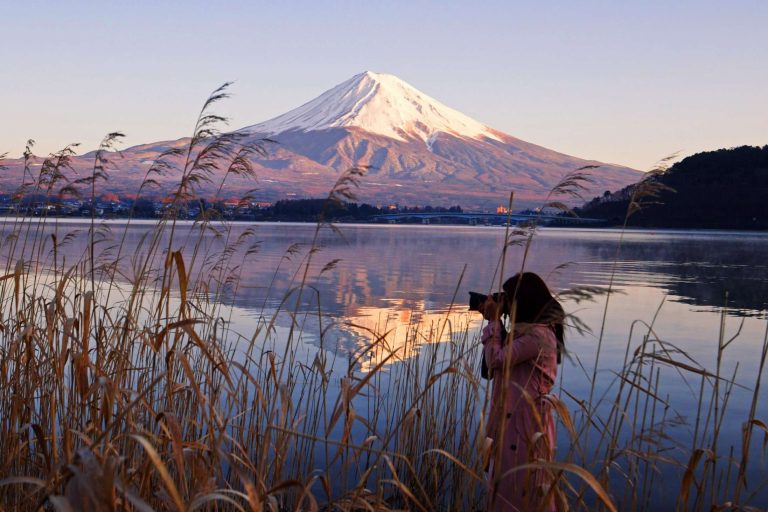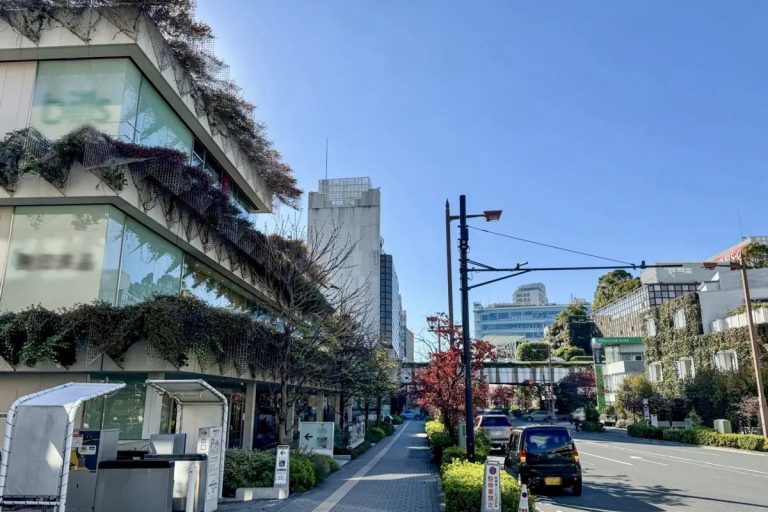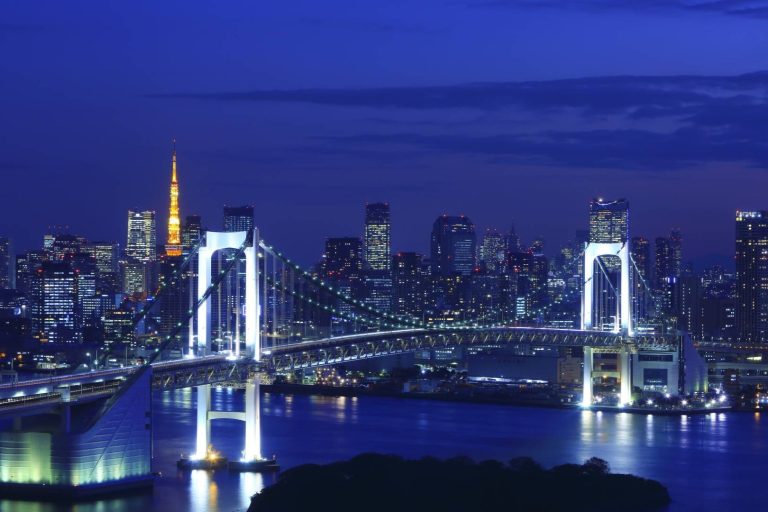Exploring Yokohama’s Vibrant Chinatown
Yokohama’s Chinatown stands as Japan’s largest and most colorful Chinese district, stretching across bustling streets filled with aromatic restaurants, traditional shops, and ornate temples. This vibrant neighborhood emerged in the 1860s when Yokohama opened its ports to foreign trade, welcoming Chinese merchants who established businesses and cultural institutions that continue to thrive today. The district pulses with energy as visitors wander through its maze of narrow alleys, discovering everything from authentic Chinese medicine shops to modern fusion restaurants that blend traditional flavors with Japanese sensibilities.
The area’s distinctive architecture features elaborate gates adorned with golden dragons and red lanterns that illuminate the streets after dark. Four main gates mark the boundaries of this cultural enclave, each representing different cardinal directions and decorated with intricate Chinese zodiac symbols. Walking through these portals feels like stepping into another world, where the sounds of Mandarin and Cantonese mix with Japanese conversations, creating a unique multicultural atmosphere that reflects Yokohama’s international heritage.
A Historical Overview of Chinatown
The roots of Yokohama’s Chinatown trace back to 1859 when the Treaty of Kanagawa opened Japan to international trade. Chinese merchants quickly recognized the commercial opportunities in this bustling port city, establishing trading companies and restaurants to serve both fellow immigrants and curious Japanese customers. Over the decades, the community grew from a small cluster of businesses into a thriving cultural district that preserved Chinese traditions while adapting to Japanese customs.
Kanteibyo Temple: A Cultural Gem
At the heart of Chinatown stands Kanteibyo Temple, a magnificent structure dedicated to Guan Yu, a legendary Chinese general revered for his loyalty and righteousness. The temple’s ornate facade features intricate carvings, golden dragons, and vibrant red pillars that create a stunning visual spectacle. Visitors often stop to pray for good fortune in business and relationships, following traditional rituals that have been practiced here for over a century.
Delicious Chinese Cuisine with a Twist
Chinatown’s culinary scene offers an incredible array of dining options, from street food stalls serving steaming pork buns to elegant restaurants presenting elaborate banquet meals. Many establishments have developed unique fusion dishes that incorporate Japanese ingredients and cooking techniques, creating flavors you won’t find anywhere else in the world. Popular specialties include ramen with Chinese-style toppings, Japanese-influenced dim sum, and creative desserts that blend Eastern and Western influences.
Shopping for Unique Souvenirs
The district’s shops offer everything from traditional Chinese tea sets and calligraphy supplies to modern anime merchandise and quirky souvenirs. Many stores specialize in imported goods from mainland China, Taiwan, and Hong Kong, providing visitors with authentic products at reasonable prices. Traditional medicine shops display fascinating arrays of herbs, roots, and remedies, while modern boutiques showcase contemporary Asian fashion and accessories.
Cultural Festivals and Events
Throughout the year, Chinatown hosts colorful festivals that celebrate Chinese holidays and traditions. The Chinese New Year celebration transforms the entire district into a spectacular display of dragon dances, fireworks, and traditional performances. Mid-Autumn Festival brings lantern displays and mooncake tastings, while other seasonal events showcase everything from martial arts demonstrations to traditional music concerts.
Luxury Accommodations in Yokohama
Yokohama’s luxury hotel scene has evolved dramatically in recent years, with several world-class properties opening to cater to discerning travelers seeking premium comfort and exceptional service. These establishments combine Japanese hospitality traditions with international luxury standards, creating memorable experiences that reflect the city’s cosmopolitan character. Most luxury hotels occupy prime waterfront locations, offering stunning views of Tokyo Bay, the iconic Cosmo World Ferris wheel, and the glittering Minato Mirai skyline that defines modern Yokohama’s architectural landscape.
The city’s premium accommodations feature cutting-edge amenities, award-winning restaurants, and personalized services that rival the finest hotels in Tokyo or other major international destinations. Many properties incorporate elements of Yokohama’s maritime heritage into their design, creating sophisticated spaces that celebrate the city’s unique identity while providing contemporary luxury. Business travelers appreciate the convenient locations near major corporate offices and conference facilities, while leisure guests enjoy easy access to shopping districts, cultural attractions, and entertainment venues.
Top Luxury Hotels to Consider
Oakwood Suites Yokohama leads the luxury accommodation scene with spacious apartment-style suites perfect for extended stays. The Gate Hotel Yokohama by Hulic offers boutique elegance with panoramic city views, while Mitsui Garden Hotel Yokohama Minatomirai Premier provides modern sophistication in the heart of the business district. Yokohama Bay Hotel Tokyu combines classic luxury with contemporary amenities, featuring multiple dining options and premium spa services.
Amenities and Services Offered
Luxury hotels in Yokohama typically feature state-of-the-art fitness centers, multiple dining venues ranging from casual cafes to fine dining restaurants, and comprehensive business facilities. Many properties offer concierge services that can arrange everything from private city tours to restaurant reservations, ensuring guests experience the best of what Yokohama has to offer. Spa services, premium bedding, and high-tech room amenities create comfortable retreats after busy days exploring the city.
City Views and Locations
Most luxury hotels occupy prime real estate in the Minato Mirai district, providing guests with spectacular views of Tokyo Bay and the city’s modern skyline. These locations offer convenient access to major attractions like the Red Brick Warehouse, Cosmo World amusement park, and numerous shopping centers. The waterfront setting creates a resort-like atmosphere despite being in the heart of Japan’s second-largest city.
Comparison of Accommodation Types
Luxury hotels in Yokohama range from intimate boutique properties with fewer than 100 rooms to large international chains offering hundreds of accommodations. Boutique hotels typically provide more personalized service and unique design elements, while larger properties offer extensive amenities like multiple restaurants, conference facilities, and recreational options. Extended-stay properties cater to business travelers and families seeking apartment-style accommodations with kitchenettes and separate living areas.
Booking Tips for Luxury Stays
Advance reservations are essential, especially during peak travel seasons and major events like the Yokohama Port Festival or fireworks displays. Many hotels offer package deals that include breakfast, spa treatments, or attraction tickets, providing better value than booking services separately. Consider joining hotel loyalty programs for potential room upgrades and exclusive amenities that enhance the luxury experience.
Budget-Friendly Stays in Yokohama
Yokohama offers numerous affordable accommodation options that provide comfort and convenience without compromising on quality or location. Budget-conscious travelers can choose from modern hostels, business hotels, and guesthouses that offer clean, well-maintained facilities at reasonable prices. Many budget properties are strategically located near major train stations, providing easy access to both Yokohama’s attractions and Tokyo’s diverse neighborhoods. These accommodations often feature compact but efficiently designed rooms that maximize space while including essential amenities like free Wi-Fi, air conditioning, and private bathrooms.
The city’s budget hotel scene has embraced modern design principles and technology, creating stylish spaces that rival more expensive properties in terms of comfort and functionality. Many establishments cater to international travelers with multilingual staff, English signage, and services that help guests navigate local transportation and attractions. Smart booking strategies can help travelers secure excellent deals, especially during off-peak seasons when rates drop significantly compared to luxury alternatives.
Guest House FUTARENO: A Cozy Choice
Guest House FUTARENO stands out among Yokohama’s budget accommodations with its warm atmosphere and personalized service. This charming property features comfortable private rooms and shared spaces that encourage interaction among international travelers. The guesthouse’s location provides convenient access to Chinatown and major attractions while maintaining reasonable rates that appeal to backpackers and budget-conscious tourists.
Sotetsu Hotels The Splaisir Yokohama
Sotetsu Hotels The Splaisir Yokohama represents the modern business hotel concept, offering stylish accommodations at affordable prices. The property features contemporary design elements, efficient room layouts, and amenities that cater to both business and leisure travelers. Its central location provides easy access to shopping districts and transportation hubs, making it an excellent base for exploring the city.
Facilities in Budget Hotels
Most budget accommodations in Yokohama include essential amenities like free Wi-Fi, air conditioning, private bathrooms, and basic toiletries. Many properties feature common areas where guests can relax, work, or socialize with fellow travelers. Some establishments offer additional services like laundry facilities, luggage storage, and travel information desks that help guests make the most of their stay.
Transportation Accessibility
Budget hotels typically locate near major train stations or bus stops, ensuring guests can easily reach attractions throughout Yokohama and neighboring Tokyo. Many properties are within walking distance of JR lines, subway stations, or bus terminals that connect to airports and other major destinations. This strategic positioning allows budget travelers to save money on accommodation while maintaining convenient access to transportation networks.
Reviews and Recommendations
Online reviews consistently praise Yokohama’s budget accommodations for their cleanliness, helpful staff, and convenient locations. Many guests appreciate the balance between affordability and quality, noting that budget properties often exceed expectations with thoughtful amenities and services. Travelers recommend booking directly with hotels or through reputable booking platforms to secure the best rates and avoid potential issues.
Cultural Experiences in Yokohama
Yokohama’s rich cultural landscape offers visitors countless opportunities to explore Japan’s fascinating blend of traditional heritage and international influences. The city’s unique position as Japan’s first international port created a distinctive cultural identity that celebrates both Japanese traditions and global connections. Museums, historic sites, and cultural institutions throughout the city tell the story of how Yokohama evolved from a small fishing village into a major international gateway that continues to shape modern Japan.
Cultural enthusiasts can spend days exploring the city’s diverse offerings, from world-class museums showcasing everything from silk production to maritime history, to historic neighborhoods that preserve architectural treasures from the Meiji era. The city’s commitment to preserving its cultural heritage while embracing innovation creates fascinating juxtapositions where centuries-old temples stand alongside cutting-edge art galleries and modern entertainment complexes. This blend of old and new provides visitors with authentic insights into how Japanese culture has adapted and evolved over more than 150 years of international exchange.
Private City Tours with Local Guides
Experienced local guides offer personalized tours that reveal hidden aspects of Yokohama’s culture and history that most visitors never discover. These intimate experiences allow travelers to explore neighborhoods, sample local foods, and learn about traditions from knowledgeable residents who share personal stories and insights. Custom itineraries can focus on specific interests like architecture, food culture, or maritime history, creating memorable experiences tailored to individual preferences.
Exploring the NYK Hikawa Maru Ship
The NYK Hikawa Maru, a beautifully preserved ocean liner from the 1930s, offers visitors a unique glimpse into Japan’s maritime history and the golden age of ocean travel. This floating museum features restored passenger cabins, dining rooms, and deck areas that showcase the luxury and elegance of pre-war international travel. Interactive exhibits explain the ship’s role in connecting Japan with the rest of the world during a crucial period in the country’s modern development.
Yokohama Silk Museum Highlights
The Yokohama Silk Museum celebrates the city’s crucial role in Japan’s silk trade, which helped finance the country’s rapid modernization during the Meiji era. Fascinating exhibits showcase the entire silk production process, from silkworm cultivation to the creation of exquisite fabrics that were exported worldwide. Visitors can observe live silkworms, try their hand at traditional weaving techniques, and learn about the international trade networks that made Yokohama a global commercial center.
Historic Bashamichi Street Architecture
Bashamichi Street preserves some of Yokohama’s finest examples of Meiji-era Western architecture, created when Japanese architects first began incorporating European design elements into their buildings. The tree-lined boulevard features historic banks, hotels, and commercial buildings that showcase the architectural experimentation of the late 19th century. Walking tours reveal the stories behind these structures and their role in Japan’s cultural transformation.
Engaging with Local Culture
Visitors can participate in traditional cultural activities like tea ceremonies, calligraphy workshops, and seasonal festivals that provide hands-on experience with Japanese customs and traditions. Many cultural centers and community organizations welcome international visitors who want to learn about local customs, practice language skills, or participate in volunteer activities that contribute to the community while creating meaningful cultural exchanges.
Outdoor Activities and Parks
Yokohama’s extensive network of parks and outdoor spaces provides residents and visitors with numerous opportunities to enjoy nature, recreation, and relaxation within the urban environment. The city’s planners have prioritized green spaces that serve multiple functions, from providing peaceful retreats for contemplation to hosting festivals and community events that bring people together. These outdoor areas showcase different aspects of Japanese landscape design, from traditional gardens that reflect centuries-old aesthetic principles to modern parks that incorporate contemporary recreational facilities and environmental sustainability features.
The waterfront location offers unique outdoor experiences that combine urban sophistication with natural beauty, creating spaces where visitors can enjoy harbor views, seasonal flowers, and recreational activities while remaining connected to the city’s cultural and commercial attractions. Many parks feature walking and cycling paths that connect different neighborhoods, allowing visitors to explore the city at a leisurely pace while enjoying fresh air and exercise. These outdoor spaces serve as community gathering places where locals and tourists can observe daily life, participate in seasonal celebrations, and experience the changing rhythms of urban nature throughout the year.
Yamashita Park: A Scenic Escape
Yamashita Park stretches along Yokohama’s waterfront, offering stunning views of Tokyo Bay and the city’s modern skyline. This beloved green space features wide promenades perfect for leisurely walks, well-maintained gardens that showcase seasonal flowers, and numerous benches where visitors can relax while watching ships navigate the busy harbor. The park’s design incorporates both Japanese and Western landscape elements, creating a harmonious blend that reflects Yokohama’s international character.
Activities at the Park
Visitors to Yamashita Park can enjoy various recreational activities including jogging along waterfront paths, picnicking on grassy areas, and photography sessions that capture the park’s scenic beauty and harbor views. The park hosts seasonal events like flower festivals, outdoor concerts, and cultural performances that attract both locals and tourists. Children’s play areas and open spaces provide families with safe environments for outdoor recreation and relaxation.
Shopping in the Red Brick Warehouse District
The historic Red Brick Warehouse district combines shopping, dining, and entertainment in beautifully restored early 20th-century buildings that once served as customs facilities for Yokohama’s busy port. These architectural treasures now house boutique shops, art galleries, restaurants, and event spaces that celebrate both the area’s industrial heritage and contemporary creative culture. The district’s unique atmosphere makes shopping here a cultural experience rather than just a commercial transaction.
Local Coffee and Ice Cream Spots
Yokohama Roasted Coffee and similar local establishments offer visitors opportunities to sample high-quality beverages while enjoying park views and people-watching. These cafes often feature outdoor seating areas that take advantage of pleasant weather and scenic surroundings. Local ice cream shops serve unique flavors that incorporate regional ingredients and seasonal specialties, providing refreshing treats during warm weather exploration.
Cup Noodles Museum: A Unique Experience
The Cup Noodles Museum celebrates the invention of instant ramen, a culinary innovation that originated in Japan and spread worldwide. Interactive exhibits allow visitors to create their own custom cup noodle flavors, learn about food technology and marketing, and explore the global impact of this simple but revolutionary product. The museum combines education with entertainment, making it popular with families and curious visitors of all ages.
Dining in Yokohama
Yokohama’s dining scene reflects the city’s cosmopolitan character and rich cultural heritage, offering everything from authentic Chinese cuisine in Japan’s largest Chinatown to innovative fusion restaurants that blend international flavors with Japanese ingredients and techniques. The city’s position as an international port has influenced its culinary landscape for over 150 years, creating a unique food culture that celebrates both tradition and innovation. Local chefs have mastered the art of adapting foreign dishes to Japanese tastes while preserving the authentic flavors that make each cuisine distinctive.
Restaurants throughout the city cater to diverse tastes and budgets, from street food stalls serving quick snacks to elegant establishments that provide sophisticated dining experiences with harbor views and impeccable service. Many restaurants emphasize fresh, locally-sourced ingredients including seafood from nearby waters and produce from surrounding agricultural areas. The dining culture here encourages exploration and experimentation, with establishments ranging from family-run operations that have served the same recipes for generations to cutting-edge restaurants that push culinary boundaries with creative presentations and unexpected flavor combinations. For those seeking traditional experiences, there are excellent options similar to what you might find in Kamakura temples and coastal trails, where local specialties reflect centuries of culinary tradition.
Must-Try Restaurants in Chinatown
Chinatown offers dozens of authentic Chinese restaurants representing various regional cuisines from throughout China, Taiwan, and Hong Kong. Manchinro, one of the area’s most respected establishments, serves traditional Cantonese dishes in an elegant setting that has welcomed guests for decades. Other notable restaurants specialize in Sichuan spices, Beijing duck, Shanghai soup dumplings, and Taiwanese night market favorites that provide authentic tastes of Chinese regional cooking.
Sampling Local Delicacies
Yokohama has developed several unique local specialties that reflect the city’s international influences and maritime heritage. Napolitan pasta, a Japanese interpretation of Italian spaghetti with ketchup-based sauce, originated here and remains popular at local cafes and family restaurants. Fresh seafood dishes showcase the daily catch from Tokyo Bay, while fusion desserts combine Japanese and Western ingredients in creative ways that surprise and delight visitors.
Dining Experiences with a View
Many restaurants in the Minato Mirai district offer spectacular harbor and city views that enhance the dining experience. These establishments range from casual cafes with outdoor terraces to upscale restaurants with floor-to-ceiling windows that showcase the glittering skyline. Sunset dining provides particularly memorable experiences as the city lights begin to twinkle and the harbor takes on golden hues that create romantic atmospheres.
Nightcap Options in the City
Bar Casablanca and similar establishments provide sophisticated environments for evening drinks and conversation. These venues often feature extensive cocktail menus, premium spirits, and knowledgeable bartenders who can recommend drinks based on individual preferences. Many bars offer harbor views or intimate settings that make them perfect for concluding memorable days of exploration and cultural discovery.
Food Festivals and Events
Seasonal food festivals celebrate everything from Chinese New Year delicacies to summer beer gardens and autumn harvest specialties. These events often feature outdoor food stalls, cooking demonstrations, and cultural performances that combine culinary experiences with entertainment and education. Local restaurants frequently participate by offering special menus or hosting events that showcase their signature dishes and cooking techniques.
Shopping and Entertainment
Yokohama’s shopping and entertainment landscape offers visitors an impressive array of options that reflect both Japanese consumer culture and international influences. The city’s retail districts range from traditional shopping streets lined with family-owned businesses to modern malls housing international brands and cutting-edge Japanese retailers. Entertainment venues include everything from traditional theaters presenting classical Japanese performances to modern complexes featuring the latest in digital entertainment and gaming technology.
The shopping experience here goes beyond mere consumption to become a form of cultural exploration, where visitors can discover unique products that reflect Japanese craftsmanship, innovation, and aesthetic sensibilities. Many shops specialize in items that are difficult or impossible to find outside Japan, making shopping an integral part of the travel experience rather than just a way to acquire souvenirs. Entertainment options similarly provide insights into Japanese popular culture, from traditional arts that have been practiced for centuries to contemporary forms of expression that influence global trends. Those interested in modern entertainment might also enjoy exploring areas like Shibuya nightlife and shopping or the unique atmosphere of Harajuku fashion and culture, each offering distinct perspectives on Japanese contemporary life.
Unique Shops and Boutiques
Independent boutiques throughout Yokohama offer carefully curated selections of clothing, accessories, and home goods that reflect both Japanese design principles and international fashion trends. Many shops specialize in handcrafted items created by local artisans, providing visitors with authentic souvenirs that support the local creative community. Vintage stores, specialty bookshops, and quirky gift shops add character to shopping districts and provide opportunities to discover unexpected treasures.
Popular Shopping Districts
The Red Brick Warehouse district combines historical architecture with modern retail concepts, creating unique shopping environments that celebrate both heritage and contemporary culture. Minato Mirai features large shopping centers with international brands, department stores, and entertainment complexes that provide one-stop destinations for retail therapy and leisure activities. Traditional shopping streets in older neighborhoods offer more intimate experiences with local merchants and specialized shops.
Entertainment Options in Yokohama
Cosmo World amusement park provides thrills and excitement with its iconic Ferris wheel and various rides that offer spectacular views of the city and harbor. Live music venues, theaters, and cinemas present diverse programming that includes both Japanese and international performances. Gaming centers, karaoke establishments, and other entertainment facilities cater to various interests and age groups throughout the day and evening.
Local Markets and Crafts
Weekend markets and seasonal craft fairs showcase local producers, artists, and food vendors who offer fresh products and handmade items directly to consumers. These events provide opportunities to interact with local creators, learn about traditional crafts, and purchase unique items while supporting the local economy. Many markets feature live demonstrations, workshops, and cultural performances that add educational and entertainment value to the shopping experience.
Nightlife and Evening Attractions
Yokohama’s nightlife scene includes sophisticated cocktail bars, lively izakaya pubs, and entertainment districts that come alive after dark. Many venues offer harbor views and outdoor seating that take advantage of the waterfront location and pleasant evening breezes. Late-night shopping options, 24-hour entertainment facilities, and evening festivals ensure that visitors can find activities and attractions regardless of when they choose to explore the city.
Planning Your Visit to Yokohama
Successful trip planning requires consideration of multiple factors including seasonal weather patterns, transportation options, cultural events, and practical logistics that can significantly impact the overall travel experience. Yokohama’s location just south of Tokyo provides visitors with excellent connectivity to other popular destinations while offering a more relaxed pace and distinctive cultural attractions that justify dedicated time and attention. The city’s compact size and efficient transportation system make it possible to experience many highlights during a short visit, though longer stays allow for deeper exploration of neighborhoods, cultural sites, and seasonal activities that reveal different aspects of local life throughout the year.
First-time visitors benefit from understanding local customs, transportation systems, and practical considerations that help them navigate the city confidently and respectfully. Advance planning for accommodations, restaurant reservations, and popular attractions can prevent disappointment and ensure access to desired experiences, especially during peak travel seasons and major festivals when demand exceeds availability. Flexible itineraries that balance must-see attractions with spontaneous discoveries often provide the most satisfying and memorable travel experiences, allowing visitors to adapt their plans based on weather, personal interests, and unexpected opportunities that arise during their stay. For those planning broader regional exploration, Yokohama serves as an excellent base for day trips to destinations like Hakone onsen and sightseeing or the scenic beauty of Kawaguchiko Mt. Fuji views and activities.
Best Time to Visit
Spring and autumn offer the most pleasant weather conditions with comfortable temperatures, lower humidity, and beautiful seasonal changes that enhance outdoor activities and sightseeing. Cherry blossom season in early April attracts large crowds but provides spectacular natural beauty, while autumn foliage in November creates colorful backdrops for photography and leisurely walks. Summer can be hot and humid but features festivals and outdoor events, while winter offers fewer crowds and clear views of distant mountains including Mount Fuji.
Transportation Tips
JR lines, subway systems, and local buses provide comprehensive coverage throughout Yokohama and connections to Tokyo and other regional destinations. Day passes and IC cards offer convenient payment options and potential savings for visitors using public transportation frequently. Motomachi-Chukagai Station and Ishikawacho Station provide the most convenient access to Chinatown and many major attractions, while other stations serve specific districts and neighborhoods.
Recommended Itinerary for First-Time Visitors
A well-balanced itinerary might begin with Chinatown exploration and lunch, followed by afternoon visits to Yamashita Park and the Red Brick Warehouse district. Cultural attractions like the NYK Hikawa Maru ship and Silk Museum provide educational experiences, while evening dining and entertainment in the Minato Mirai district offer spectacular views and memorable conclusions to busy sightseeing days. Multiple-day visits allow for more leisurely exploration and day trips to nearby attractions.
Local Customs and Etiquette
Basic Japanese etiquette includes bowing as a greeting, removing shoes when entering homes or certain traditional establishments, and avoiding loud conversations in public transportation. Tipping is not customary in Japan, and many services include taxes and fees in posted prices. Learning a few basic Japanese phrases shows respect for local culture and often results in warmer interactions with residents and service staff.
Safety Tips and Emergency Contacts
Yokohama is generally very safe for visitors, with low crime rates and helpful local authorities who assist tourists when needed. Emergency numbers include 110 for police and 119 for fire and medical emergencies. Most major hotels and tourist information centers can provide assistance with language barriers, directions, and emergency situations. Carrying identification, emergency contact information, and basic Japanese phrases can be helpful in unexpected situations.
Frequently Asked Questions
What is the best time to visit Yokohama?
The best times to visit Yokohama are spring and autumn, which offer pleasant weather, comfortable temperatures, and beautiful seasonal changes.
What are some must-try dishes in Yokohama’s Chinatown?
Must-try dishes include traditional Cantonese dishes, Sichuan spices, Beijing duck, and Shanghai soup dumplings.
Are there budget-friendly accommodation options in Yokohama?
Yes, Yokohama offers a variety of budget accommodations, including modern hostels, business hotels, and guesthouses.
What outdoor activities are available in Yokohama?
Yokohama features extensive parks, waterfront promenades, and recreational areas for jogging, picnicking, and seasonal events.
How can I navigate public transportation in Yokohama?
Public transportation in Yokohama includes JR lines, subways, and local buses, with day passes and IC cards available for convenience.
Unveiling the Charms of Yokohama
Yokohama presents a captivating mix of tradition and modernity, inviting visitors to explore its vibrant neighborhoods, indulge in diverse cuisines, and experience a rich cultural tapestry. Whether you’re wandering through the bustling streets of Chinatown or relaxing in a luxurious waterfront hotel, the city’s unique charm promises memorable adventures for every traveler.
